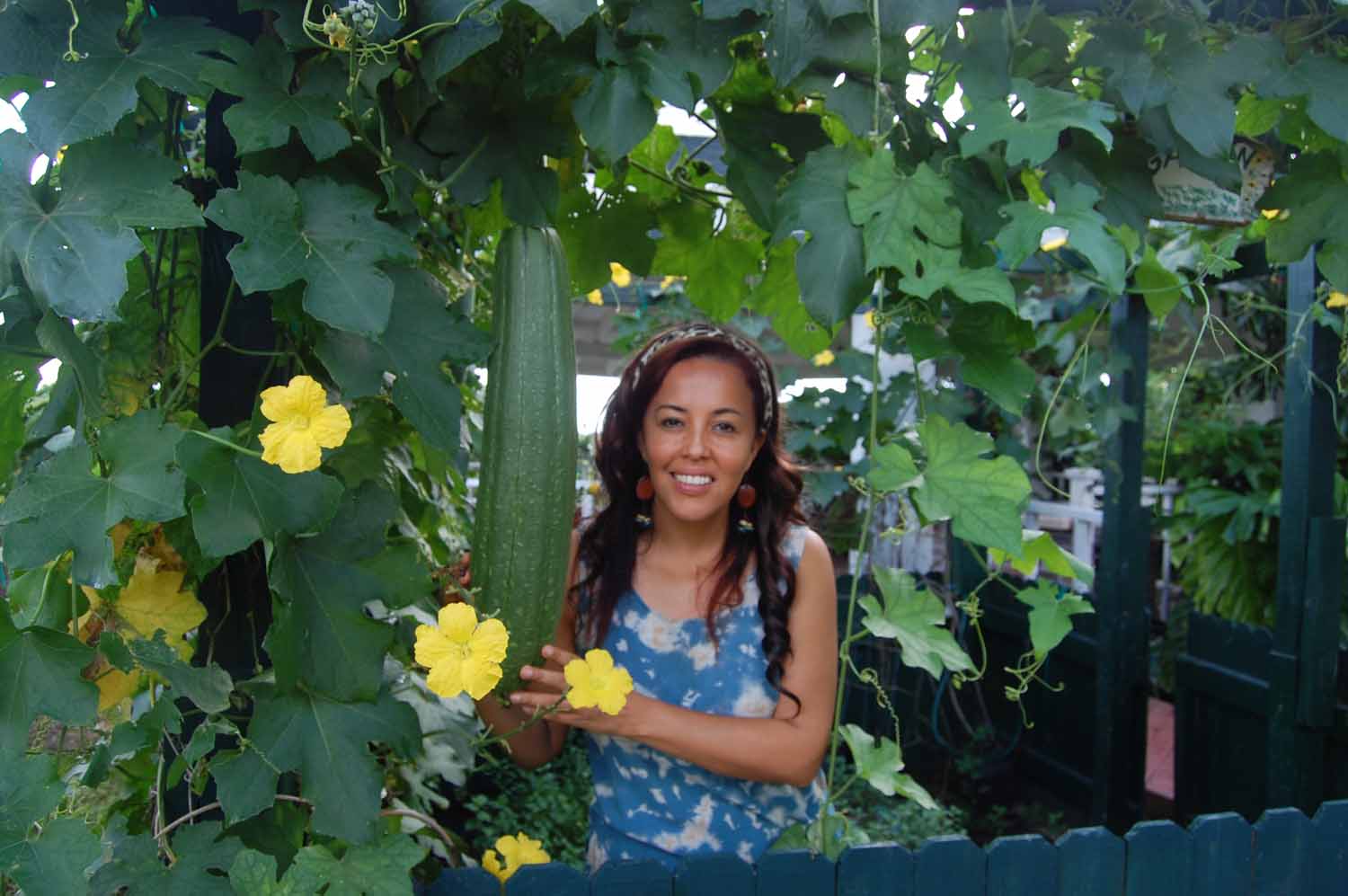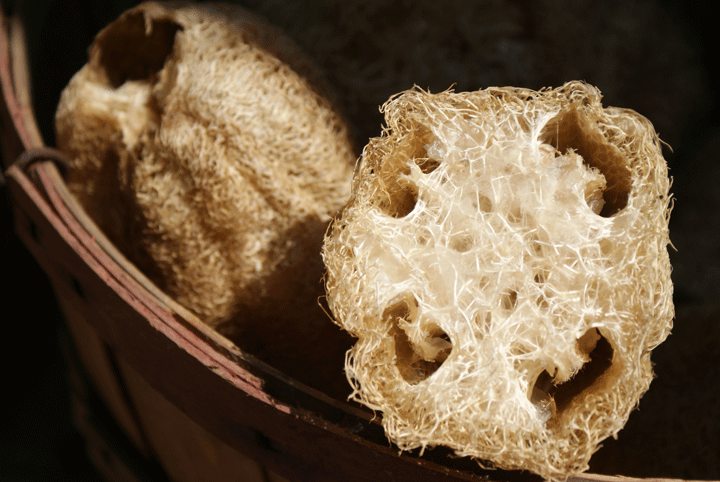Loofah: Grow Your Own Sponges

BY NORIS LEDESMA
FAIRCHILD TROPICAL BOTANIC GARDEN
As published in the Miami Herald
You may know the loofah as a bath sponge, but did you know it can be grown in South Florida? The fibers of the dried loofah fruit stiffen and hold together to form nature’s perfect sponge, which is used to gently exfoliate your skin. Immature fruit can be cooked and eaten as squash or substituted for cucumber in salads.
The species most adapted to South Florida are Luffa cylindrica and Luffa aegyptiaca. Both species have oblong fruits and are beautiful robust vines which make an interesting addition to a vegetable or flower garden. Both species are grown commercially in China, Korea, Japan and Central America. The loofah sponge is generally sold commercially in bath, health or drug stores, but you can grow it in your own backyard.
The seeds are easily sprouted and seedlings can be planted six to eight feet apart. The plants require tall, sturdy trellises for support of the heavy fruit. Loofahs are extremely vigorous plant; vines reach lengths of 15 feet or more. The small seedlings grow slowly while the roots become established, and prefer warm, dry climates.

The loofah plant grows best in full sun, and plants will produce flowers in two months after planting. Pruning is a must to keep the vine healthy. Prune off less vigorous growth and occasionally prune back vigorous growth to promote flowering. A granular fertilizer like 8-3-9 or similar formulation should be applied after one moth of planting.
Loofah plants can be sensitive to frost and cold protection must be provided for young plants by covering the entire plant with a blanket. Take care not to let the blanket or box touch the leaves.
Loofahs make an excellent summer screen plant and the plants flower and set fruit all season. Loofah vines are often used to cover decaying fences or as privacy foliage, because they are dense and fast growing. The attractive trailing vines of the plant will take over any available surface, yielding drooping green, cucumber-like fruit in the summer. When the vines are blooming, the bright yellow flowers attract many pollen gathering creatures including butterflies, ants, and bees.
 |
| The coarse fibers of the loofah are excellent for exfoliating. |
Loofah is harvested for food in many parts of Asia as the immature fruit (under six inches long) can be prepared and eaten like cucumber, squash or okra. In China, loofah is steamed, boiled, or stir-fried with garlic, onions or dried prawns, and it’s used as a cooling ingredient in spicy dishes.
If you want to produce sponges, allow the fruits to turn from green to yellow on the vine. Fruits will lose quite a bit of moisture and become light. Loofahs will dry on the vine, but in our climate conditions its better, cut them from the vine when they turn yellowish. Remove the tough outer skin and dry them in the sun. Cut off one end and shake out the seeds.
There is really no excuse not to grow a loofah, for it takes up little space, it will grow well with a minimum of care. It would be difficult to name any other single plant that can be put to more uses than the lovely loofah vine.
Noris Ledesma is curator of tropical fruit at Fairchild Tropical Botanic Garden.
